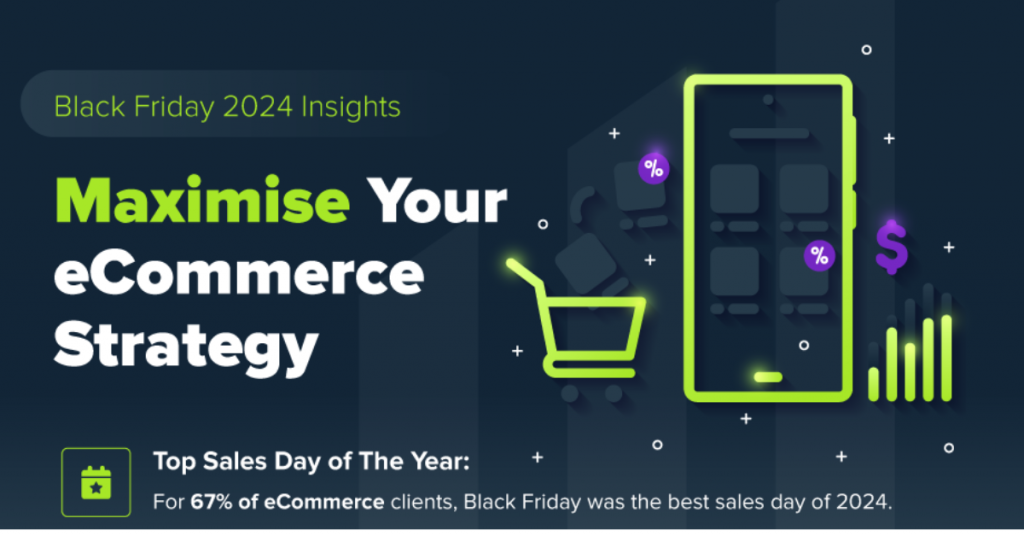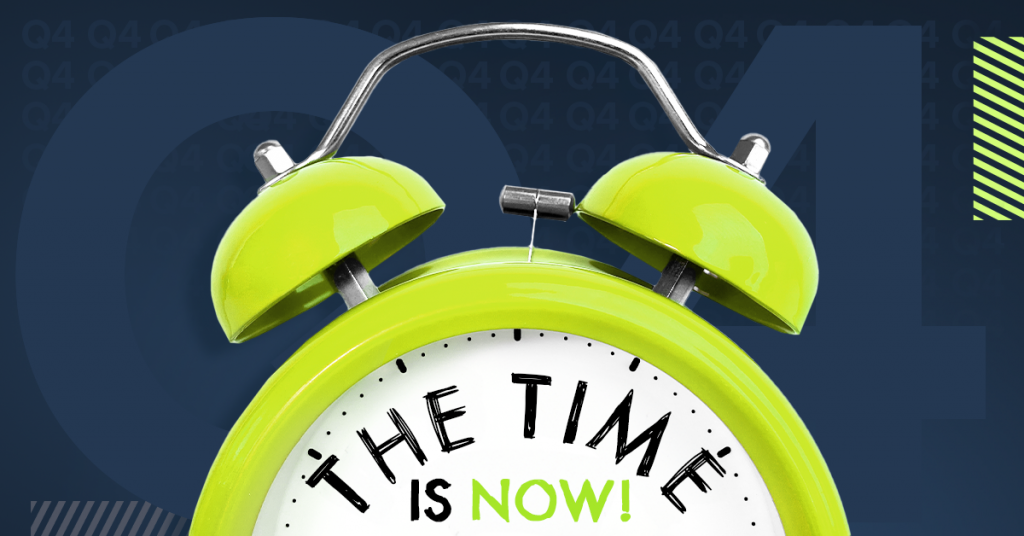
by Aleksander Skałka, Director of Solutions Consulting & Sales Enablement
The holiday season is upon us, and it’s time for eCommerce companies to ensure their data house is sparkling clean. In this article, we’ll explore the critical importance of data hygiene for eCommerce success and delve into how Customer Data Platforms (CDPs) play a crucial role in tidying up the data landscape.
When Santa doesn’t care for hygiene – or how marketers fail
What would you think of a Santa Claus, tossing his presents carelessly into the chimneys of the houses long abandoned?
Or just like nothing happened, giving John’s present to Mary, and throwing Mary’s present to the aforementioned empty house? What would Mary get then? Of course – the gift that would be suitable for her a good few years ago, when she was a little girl, and which she, to her utmost disappointment, didn’t get then.
Such Santa would suck.
Well, and what would you think about the marketer behaving in the same way? After all, the mission of a Santa Claus and a marketer is not so different. We just do not judge who was naughty and nice (as much as we’d like to).
And, given how shockingly incompetent such Santa would be in our eyes – what would happen to us, marketers, if we would behave so outrageously? What would our boss do?
The answer is: nothing. We probably do it more often than not, neglecting data hygiene and thus, making one careless mistake after another. And we just wonder, why the sales do not spike.
It’s because the customers think we suck.
The Importance of Data Hygiene
Decluttering the Data Sleigh
Understanding data hygiene’s importance involves grasping its role in simplifying and organizing customer data. Consider it as a methodical effort to eliminate clutter and arrange a workspace for optimal efficiency. Data hygiene ensures irrelevant or outdated information is removed, leaving a well-organized repository of valuable customer data.
In simpler terms, data hygiene is streamlining a workspace for a smoother workflow. By eradicating redundancies and inaccuracies, it establishes a structured environment conducive to better decision-making and operational efficiency. The objective is to craft a systematic data landscape capable of navigating the complexities of customer interactions with precision.
Highlighting the impact of data hygiene on targeted promotions, the organized data environment facilitates a nuanced understanding of customer preferences. Much like an organized workspace aiding quick access to necessary tools, clean data enables businesses to deliver targeted promotions to the right audience at the right time.
Resolutions for a Cleaner Data Future
Let’s face it, dodging the data dirt is like avoiding that one tangled string of holiday lights. Acknowledging challenges linked to poor data hygiene is essential for devising effective solutions. So let us dive for a moment into the mess and stress poor data hygiene brings to the table.
Spotlighting issues such as outdated information and inconsistent records, attention is drawn to how these challenges can disrupt customer interactions and compromise the efficacy of marketing efforts. Poor data hygiene can lead to misguided strategies and erode trust- it’s a tangle of troubles you don’t want to untie.
The goal is to mitigate the pitfalls associated with neglecting data cleanliness. This isn’t just a once-a-year thing; it’s a year-round commitment to ensure your customer data sleigh is sleek, organized, and zooming with the precision of Santa’s own. So. Read it and stick to it like it’s your New Year’s resolution – no excuses.
How CDPs Add a Twinkle to Your Data
CDPs as Santa’s Little Helpers
The role of Customer Data Platforms (CDPs) in the data hygiene journey is somewhat like reliable assistants streamlining your workflow. CDPs act as facilitators in the consolidation of customer data from various touchpoints. It is an organizational tool that gathers scattered information into one coherent structure, providing a unified and accurate view of customer data. This consolidation ensures that every piece of data contributes meaningfully to the overall understanding of customer interactions.
The Magic of Unified Customer Profiles
CDPs contribute significantly by creating a 360-degree view of customers. Think of it as assembling a puzzle where each piece represents a customer interaction. CDPs bring together these pieces, constructing a unified profile that captures the entirety of a customer’s journey.
This unified customer profile becomes the backbone for effective personalization and targeted marketing strategies. Businesses can navigate the intricate landscape of customer preferences, tailoring promotions and interactions with precision. The magic of CDPs lies in their ability to transform scattered data into a cohesive and actionable resource for businesses, enhancing the effectiveness of their strategies.
A Festive Data Cleaning Plan with CDPs:
Deck the Halls with Data Governance
At home, we are decking the halls with festive adornments. At work – we deploy data governance in maintaining data quality.
How significant data governance can be for a company? Imagine the guiding star that ensures the clear view and reliability of your data. Data governance adds order and precision to your data environment.
Implementing effective data governance processes involves a systematic approach to managing and maintaining the quality and integrity of data.
- Define Clear Protocols:
- Establish clear protocols for data collection, storage, and usage. Clearly define who owns the data and who is responsible for its accuracy and reliability.
- Implement standardized procedures for data entry and validation to minimize errors from the outset.
- Set Data Standards:
- Define and enforce data standards across the organization. This includes standardizing data formats, naming conventions, and categorization methods.
- Ensure that everyone in the organization understands and follows these standards to maintain consistency in data handling.
- Establish Oversight Mechanisms:
- Appoint a dedicated data governance team or officer responsible for overseeing data-related activities.
- Implement regular checks and reviews to ensure adherence to data protocols and standards. This oversight helps identify and address issues promptly.
- Create a Governance Framework:
- Develop a comprehensive governance framework that outlines the roles, responsibilities, and processes related to data governance.
- Clearly communicate this framework to all relevant stakeholders, fostering a shared understanding of the importance of data governance.
- Promote Data Transparency:
- Foster a culture of transparency regarding data practices. Ensure that employees understand how data is collected, processed, and used.
- Encourage open communication about data-related challenges and actively involve employees in the data governance process.
- Implement Data Quality Controls:
- Integrate data quality controls at various stages of the data lifecycle. This includes regular data validation, cleansing, and enrichment processes.
- Use automated tools to identify and rectify data discrepancies, ensuring a proactive approach to maintaining data quality.
- Provide Ongoing Training:
- Conduct regular training sessions for employees on data governance best practices. This includes training on data entry standards, privacy policies, and the importance of maintaining data accuracy.
- Keep employees informed about any updates or changes to data governance policies.
- Document Data Governance Policies:
- Create detailed documentation outlining data governance policies and procedures. This documentation serves as a reference for employees and helps maintain consistency.
- Periodically review and update the documentation to align with evolving business needs and industry standards.
- Integrate Data Governance into IT Systems:
- Integrate data governance principles into IT systems and workflows. This includes incorporating data quality checks into automated processes and ensuring that systems support data governance objectives.
- Encourage Continuous Improvement:
- Foster a culture of continuous improvement by regularly reviewing and refining data governance processes.
- Solicit feedback from employees involved in data management and use this input to enhance governance practices over time.
By implementing these actionable steps, companies can establish a robust data governance framework that enhances the quality, reliability, and integrity of their data assets, creating a sparkling and efficient data environment throughout the organization.
Jingle All the Way with Regular Data Audits
To maintain an organized data environment, consider regular data audits as the jingling bells that ensure everything stays consistent and accurate.
Conducting thorough data audits is a crucial aspect of ensuring data accuracy, consistency, and reliability. Here is a step-by-step guide to help businesses navigate the process:
- Define Audit Objectives:
- Clearly define the objectives of the data audit. Understand the specific aspects of data quality, such as accuracy, completeness, consistency, and timeliness, that the audit aims to assess.
- Identify Data Sources:
- Compile a comprehensive list of all data sources within the organization. This includes databases, spreadsheets, third-party integrations, and any other systems that contribute to the data landscape.
- Document Data Formats and Structures:
- Document the formats and structures of different data types. Understand how data is formatted, organized, and stored in each source. This documentation is crucial for identifying potential inconsistencies.
- Create a Data Inventory:
- Develop a detailed data inventory that catalogs the types of data collected, stored, and processed. Categorize data based on its sensitivity, criticality, and usage to prioritize audit efforts.
- Select Audit Tools and Techniques:
- Choose appropriate tools and techniques for conducting the audit. This may involve using data profiling tools, statistical analysis, or manual examination, depending on the complexity of the data landscape.
- Perform Data Profiling:
- Utilize data profiling techniques to analyze the quality of data within each source. Data profiling involves assessing data completeness, identifying duplicates, and understanding data distributions.
- Check Data Accuracy and Consistency:
- Verify the accuracy and consistency of data across different sources. Ensure that data points align with defined standards and that inconsistencies, such as conflicting information, are flagged for review.
- Evaluate Data Timeliness:
- Assess the timeliness of data updates and identify any delays in data processing. Timely data is crucial for making informed decisions, and any bottlenecks in data flow should be addressed.
- Detect Anomalies and Outliers:
- Use statistical analysis to detect anomalies and outliers within the data. Unusual patterns or values may indicate errors or irregularities that need further investigation.
- Address Inconsistencies Promptly:
- Develop a systematic process for addressing inconsistencies promptly. This may involve updating data entries, resolving discrepancies, or establishing protocols to prevent similar issues in the future.
- Document Audit Findings:
- Document the findings of the data audit comprehensively. This documentation should include identified issues, recommended actions, and any insights gained during the audit process.
- Implement Corrective Actions:
- Implement corrective actions based on the audit findings. This may involve updating data governance policies, enhancing data validation processes, or providing additional training to employees involved in data management.
- Monitor Continuous Improvement:
- Establish a framework for continuous improvement by monitoring data quality metrics over time. Regularly revisit and update the data audit process to align with evolving business needs and changing data landscapes.
- Communicate Audit Results:
- Communicate the results of the data audit to relevant stakeholders. This transparency fosters accountability and encourages a collective effort to maintain data quality.
By following this step-by-step guide, businesses can conduct thorough data audits that pinpoint inconsistencies, ensure data accuracy, and contribute to the ongoing improvement of their data governance practices.
Unwrapping up
So, what will we see, eventually, when we finally, with all the help CDP can get us, unwrap our data from all inconsistencies, unwanted redundancies and unreliability? Clean data?
Well, yes, but most of all:
Improved Decision-Making:
Clean data provides a reliable foundation for decision-makers. When information is accurate and consistent, businesses can make informed decisions, leading to better strategic planning and execution.
Enhanced Customer Experiences:
Clean data enables personalized and targeted interactions with customers. With accurate customer profiles, businesses can deliver tailored experiences, leading to increased customer satisfaction and loyalty.
Operational Efficiency:
Data hygiene ensures that systems are working with accurate information. This minimizes errors, reduces the need for manual corrections, and streamlines operational processes, contributing to overall efficiency.
Cost Savings:
Maintaining clean data reduces the costs associated with errors and inaccuracies. Businesses save resources that would otherwise be spent on addressing data-related issues, allowing for more efficient resource allocation.
Regulatory Compliance:
Clean data is essential for compliance with data protection regulations. Accurate and well-maintained data ensures that businesses meet legal requirements, avoiding potential fines and penalties associated with data breaches or non-compliance.
But here’s the punchline: While CDPs are the unsung heroes, remember they’re just tools. Deploying data governance and audits is finally up to you. It’s up to your team to steer this sleigh with discipline.
 Follow
Follow
















